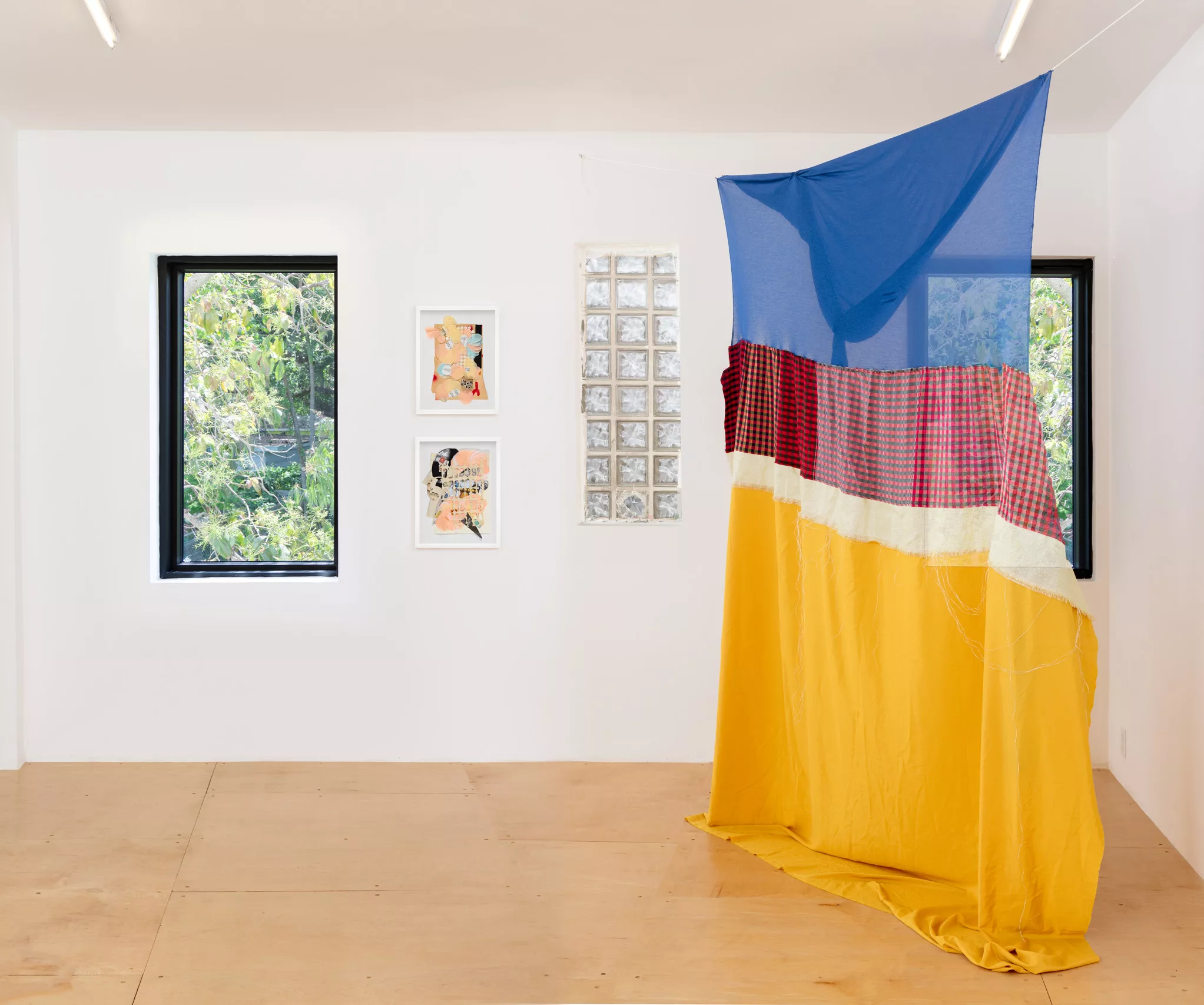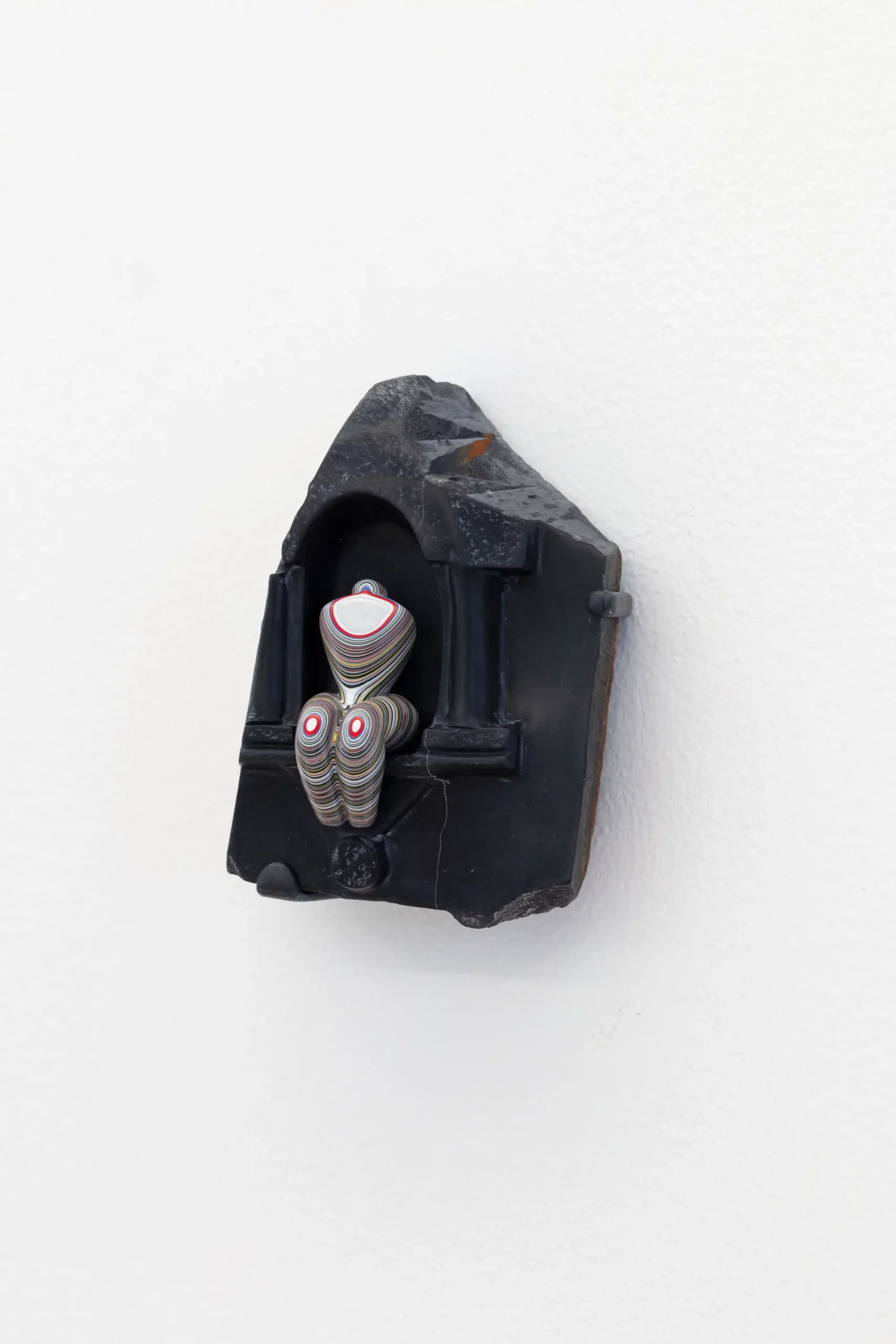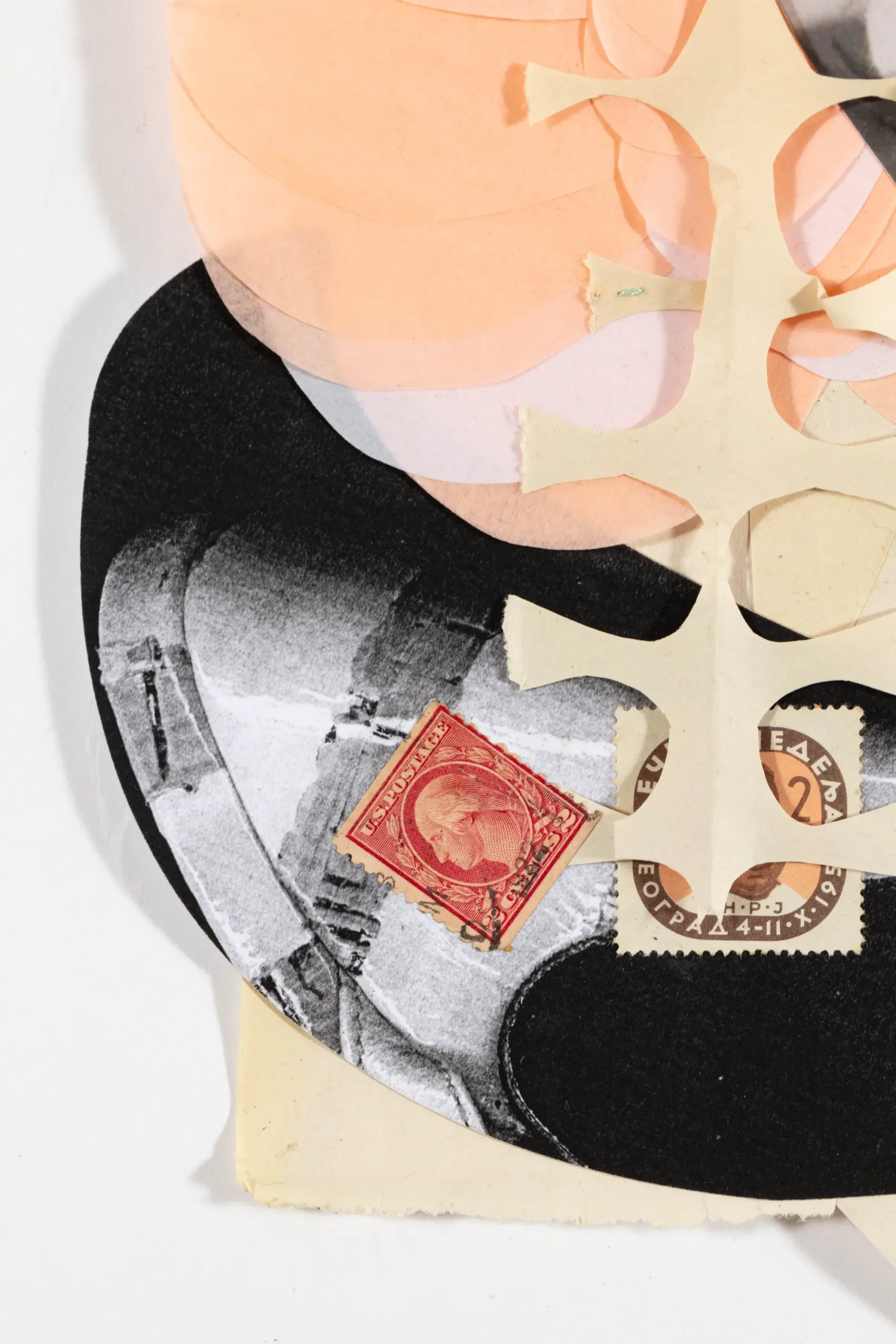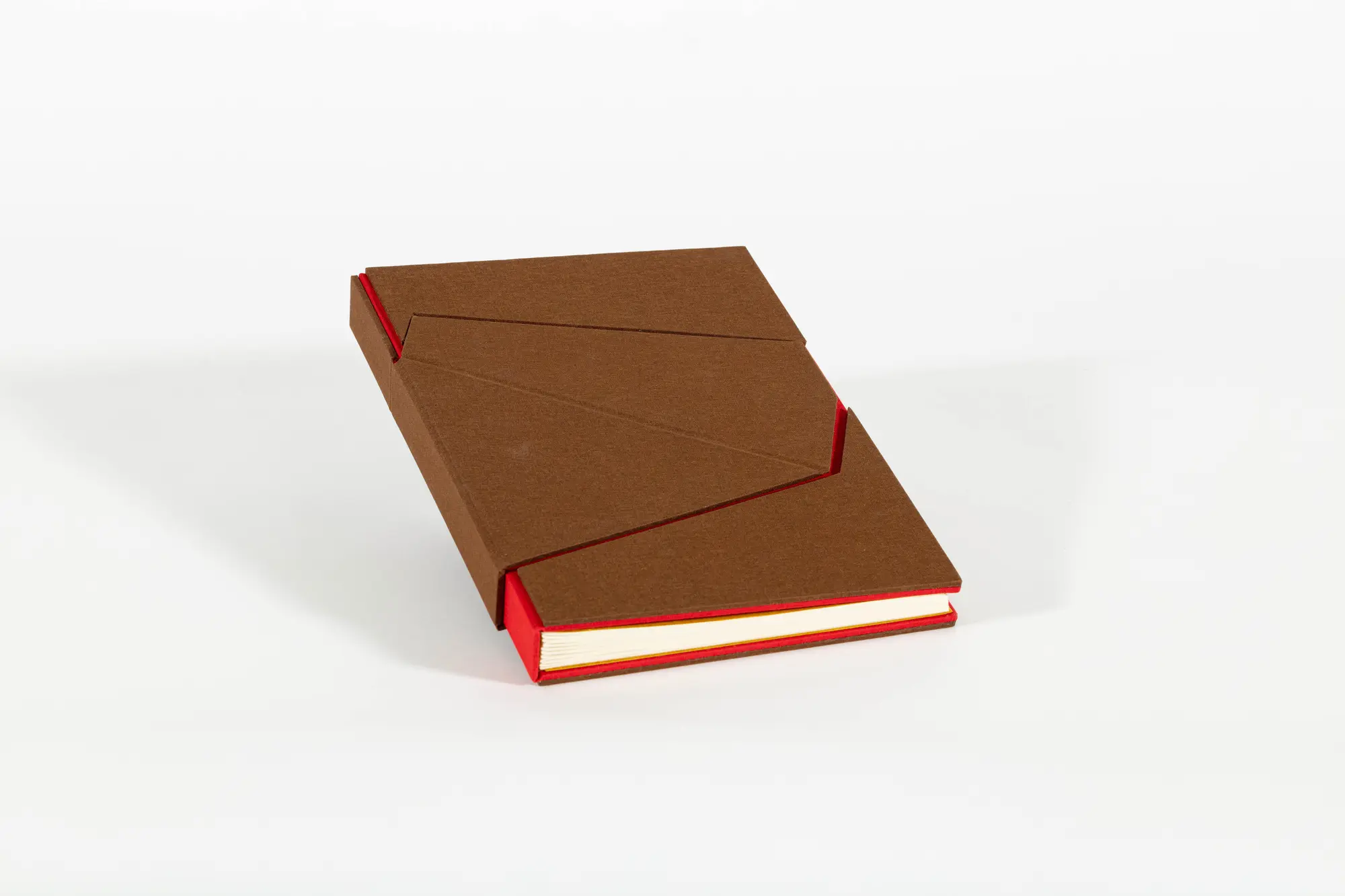ENERGY FIELD: An Interview with Camille Okhio on Her Curatorial Début at Nina Johnson Gallery

by Felix Burrichter
In recent years, the use of the word “energy” has undergone a contextual shift, from the mere description of physical forces to something more vague and personal. As a result, the determination of “good” or “bad” energy has become a subjective gauge of human power, strength, or influence, reflecting a linguistic shift similar to the evolution from “I think” to “I feel” in expressing opinions. In the process, something deeply personal is often being commodified and sometimes even weaponized into an externalized disciplinarian force for the modern vibes economy, neglecting the internal energy that individuals summon and grapple with privately. This is particularly true for artists, who channel their emotional and intellectual energy into their work, laying bare their inner processes for public scrutiny. Residual Energies, a recent exhibition at Nina Johnson Gallery in Miami, curated by writer and curator Camille Okhio, creates a safe space of sorts for artists from diverse backgrounds to express these “energies” through a wide range of media. Okhio, who also dayjobs as Senior Design Writer for Elle Décor, is deeply invested in the notion of objects holding personal and historical energy. The exhibition’s variety of artistic forms — including copper, glass, gold, paper, steel, textiles, and terrazzo, to name but a few — reflects this sensibility, with many works created specifically for the show following conversations between Okhio and the participants. In direct dialogue with artists such as Lotte Andersen, Joy Bonfield-Colombara, F Taylor Colantonio, Sarah Jean Culbreth, Ficus Interfaith, Dozie Kanu, Anne Low, Eric N. Mack, Isabella Norris, Ope Omojola, Valentina Cameranesi Sgroi, Sarah Smith, and Olivia Vigo, Okhio encouraged them to expand their use of materials without restriction, creating what she calls a “feedback loop of the soul.” As a result, many pieces blur the lines between function and art, design and craft. For Okhio, however, such distinctions are secondary: “I just want the show to remind everyone how beautiful life is.”
Felix Burrichter: The show is called Residual Energies. Which energies within yourself did you summon for the curation of this show?
Camille Okhio: I summoned fortitude and freedom primarily. I felt like every good show has a structure behind it, but I really don’t like a show that’s only about one typology or one material — I prefer a more experimental concept. Ultimately, I wanted this show to be about things that we cannot see but that we can feel distinctly, which is what Residual Energies is about for me. The freedom was important to me because I wanted the artists to be free of constraints they usually face when dealing with a gallery — whether material, medium, or scale. I wanted to make sure the artists created work that was both a joy to create and meaningful. Someone like Ope Omojola, for example, who usually makes jewelry. I told her to do something non-functional, so she came up with a little reliquary — a female figure carved out of Fordite. Valentina Cameranesi Sgroi usually works in glass, but for this show, she experimented with enameled copper to create these vessels that are like scoops you’d find in a Catholic church.
What is the common thread among all the artists in the show?
They all have practices that are singular and distinct from anyone else I know working with their chosen materials. Each of them approaches life with a material and emotional sensitivity that I think is rare. They all operate with profound integrity, which is even rarer.
You have a deep appreciation for historic knowledge and craft and a unique ability to transport these values into a contemporary context. Tell me about your personal relationship to time travel.
I time travel every day, mostly through books, which is why I also love having a book in the show [by Sarah Smith of Stockpile Studio]. I was bullied mercilessly from elementary school through high school, and reading was my escape from reality. Words were a balm and a means through which I could imagine a brighter, more expansive future. As an adult, I am more conscious of when and how I am taken outside of the present moment. I engage with what is outside of the present not as a means of escape but as a means to better understand myself and other human beings. I do this through reading but also through visiting charged objects and architectural sites throughout history, such as a walk through Versailles, Sanssouci, or the Kunsthistorisches Museum in Vienna, a visit to the Benin Bronzes, the Ancient Agora in Athens, or Ostia Antica, or the time I spent with Juan de Pareja’s Manumission Papers which emitted insane energy, as you can imagine. Literal freedom in words. When I go to these places, I hear the voices of the people who made them and who lived in them, and I am reminded of how inexplicably expansive existence is. These moments give me the perspective I need to remain discerning in the present. I also think of how humans have always been the same. We eat, we shit, we fuck, we hoard, we create, we invent. We’ve always done these things.
What do you consider your most important responsibility as a curator?
Making sure the artists’ work is treated with respect by myself, the gallery, and visitors. Making sure the work is accurately communicated. Making sure that I do not project my own intentions onto someone else’s artistic impulse. And making sure I stay true to myself through every step of producing the show.
Can you talk about the materiality of the show: textiles, collage, ceramic, precious metals, assemblage, etc.
Humans are tactile creatures. We need our senses not just to survive but to enjoy. A priority for me was for visitors not just to find this show interesting or beautiful, but to enjoy it. I feel that it is much easier when there is more to see by way of mediums. Also, I find that when a group show is limited to one medium, it can become more difficult to see the individual merits of each work. When materials are not immediately legible and there are many of them, it drives whoever is engaging with the work to spend more time with it and investigate it more deeply. Like the “feedback loop of the soul” I mention in the press release, these works and mediums are meant to inspire reflection and encourage visitors to consider what life might look like if they recognize objects’ ability to suspend and sustain life.
To what extent do you think about the Design/Art binary, and did it matter in the conception for this show?
I thought about this explicitly. For me, beauty or an engaging visual experience is more emotionally and intellectually important than function or lack thereof.
Is Residual Energies autobiographical?
After the opening, several of my friends told me they felt my spirit in the gallery and that they saw me in the show. I trust them, and so I can confidently say the show is an accurate representation of what I find moving and intellectually and visually stimulating. It is a love letter to anyone who has honored the spirit of things or honored the integrity of my own spirit. So in that sense, I would say the show is deeply autobiographical.
What makes the show specific to Miami?
When I think of Miami, I think of precarity and freedom and how the two may be related. It is obviously a hotspot for dialogues concerning climate change and erosion, topics that can be both ephemeral and acutely physical. That is how I think of the show, art making, or human existence to an extent: an exercise in ephemerality. We are physical beings, but when we die, we essentially disappear. Our cells decompose and feed other living things. We go on living in the dirt and in the trees. Our souls, if you believe in them, exist as they always did — unseen but felt — much in the same way we can feel chemistry or repulsion for someone at first sight. Energy is ephemeral in this way, and at other times, the energy from an atom can cause physical devastation. Residual Energies is a statement on ephemerality and physicality and how one cannot exist without the other.
If you could only leave objects behind, what would they be?
My filled journals and the binders I keep of meaningful ephemera — a self-made archive of things that meant something to me at certain points in my life: invitations, postcards, press releases, dried flowers, etc. They also contain mind maps that I make for myself, where I write down the words of events or objects that inspire me — whether it’s modernist Italian lighting, ancient Roman glass, 19th-century Pennsylvania Dutch cabinets, or German Renaissance glass. I circle these words and draw literal lines between those that have a connection. There is always a pattern that emerges. I do this as an exercise to keep my mind organized; it helps me better understand myself. I also feel it’s my responsibility to leave something like this behind, not for egotistical reasons, but more from a cultural heritage perspective. There aren’t that many first-person accounts of Black women’s interior worlds, especially those who work in fields where they are vastly outnumbered. I believe Black women are the most richly inventive human beings on earth, and we should leave every little thing that mattered to us behind as evidence of that.
Interview by Felix Burrichter
Residual Energies, Camille Okhio’s curatorial début, is up at Nina Johnson in Miami until October 19th, 2024.
Read the full article online on PIN-UP Magazine.
























